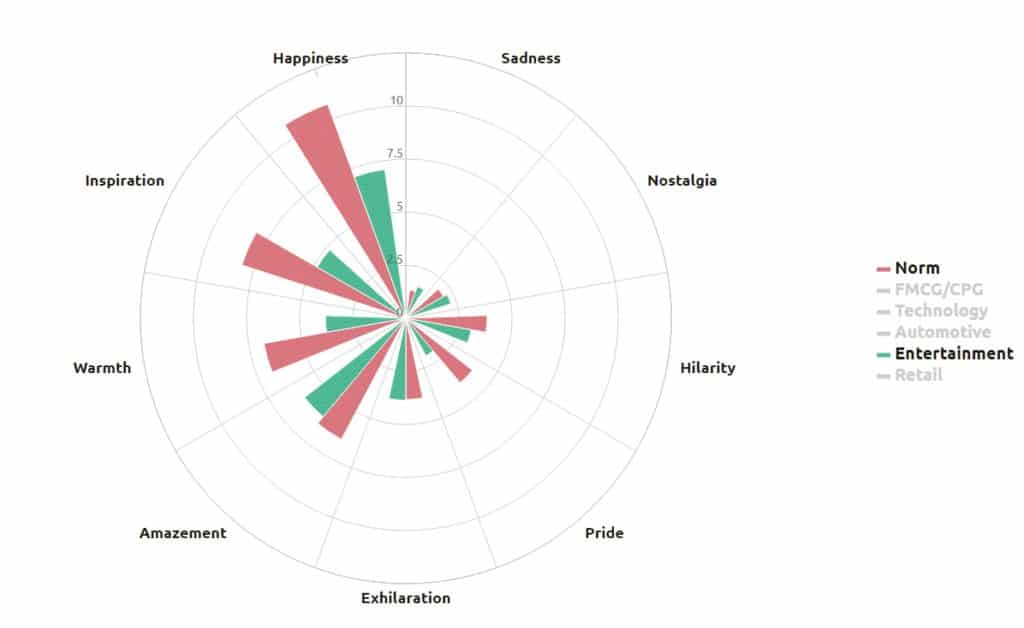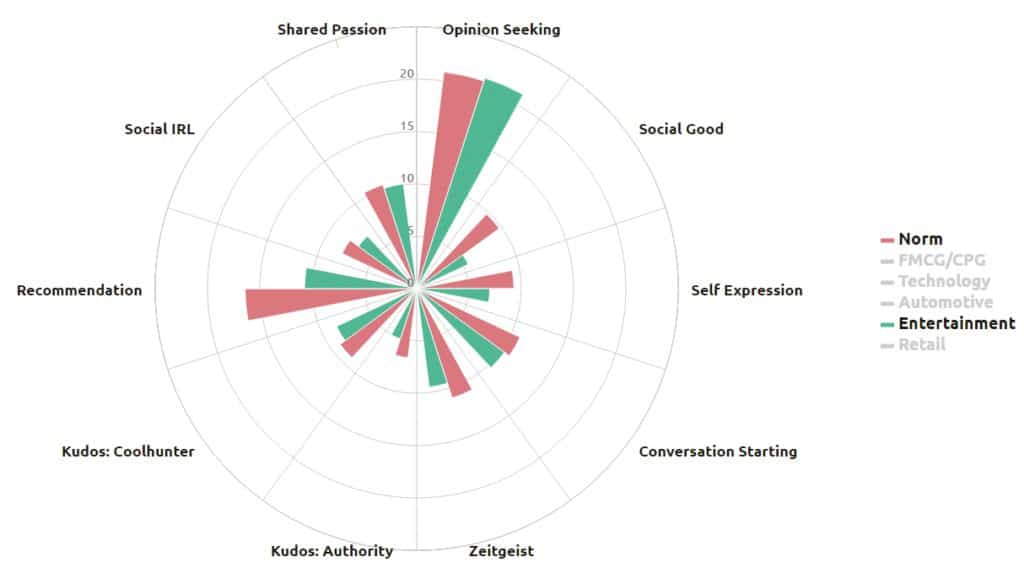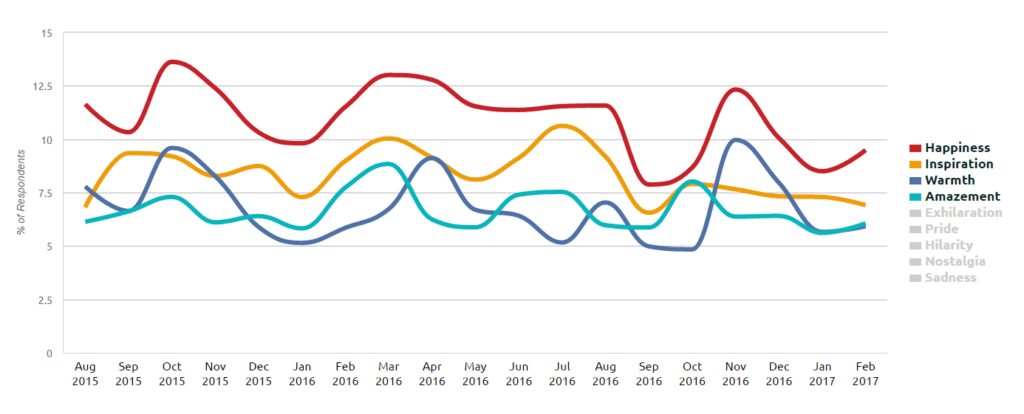Entertainment Ads Have Less Emotional Impact Than Average Ad
Summer is just around the corner. And you know what that means… a new crop of blockbusters is upon us. From Wonder Woman to the latest Transformers film, and even Baywatch!
Our research has shown that almost a third (31%) of moviegoers who watched a movie trailer said they would purchase a ticket to watch the film, which means getting your promo seen is one of the best ways to drive success at the box office.
The thrill of the big screen needs to come across on the small screen, but according to data from our insights platform Unruly Pulse, video ads from the entertainment sector simply aren’t generating the same levels of emotion as the rest of the ad industry.
As you can see from the chart below, when compared to the US norm, the emotional responses to ads from the entertainment industry is way behind. In fact, they are below the average for all but one emotion – exhilaration. They elicit the same level of exhilaration as the average US ad, which, considering the multi-million dollar production budgets from movie studios there to back it up, seems like a missed opportunity.
When taking a look at the social motivations, we see a similar story. Entertainment ads weren’t able to give viewers strong enough reasons to share their ads or trailers. Creating something highly emotional and incorporating social motivations – whether that be conversation starting or opinion seeking – are the two top reasons that help get an ad seen and shared online, so up the ante on these points!
We can see by looking at the different emotional responses over time that happiness, inspiration, warmth and amazement are the most prevalent across all types of videos. You can use this info in a few different ways.
You can increase happiness or warmth around the holidays – when it’s at its highest. Or you can go against the current: inspiration and happiness dip around back-to-school time, so your creative could stand out by making ads with these emotions during that time.
Methodology
This blog post was updated on 9 May to give more context to the methodology. We looked at entertainment as an overall category, which includes both gaming ads and movie trailers.
Curious how to target moviegoers?
Check out our Emotional PMP case study to find out how we were able to deliver a movie studios campaign that outperformed benchmarks by more than 168%.



